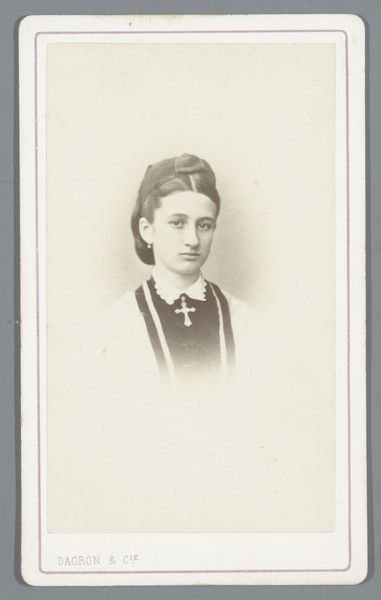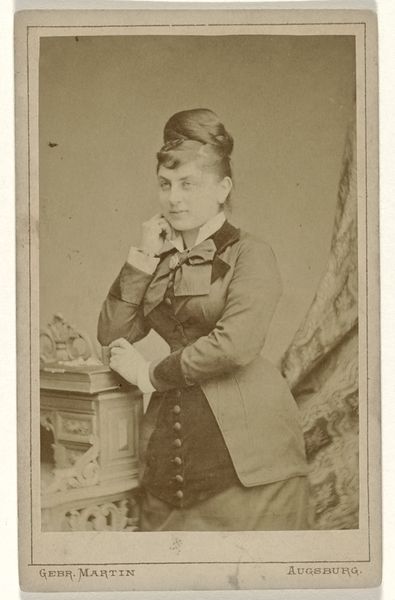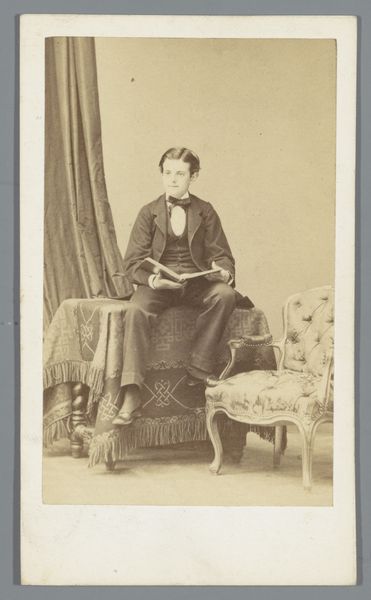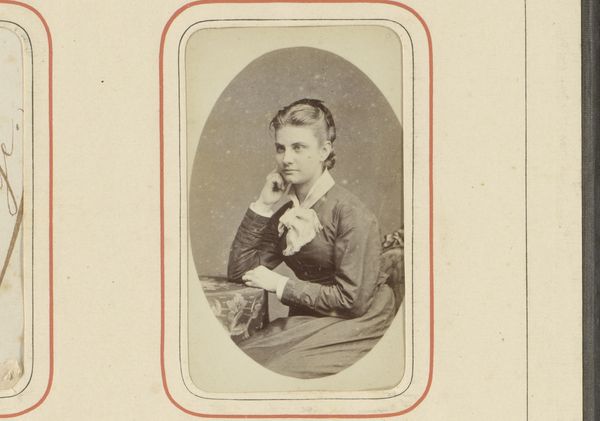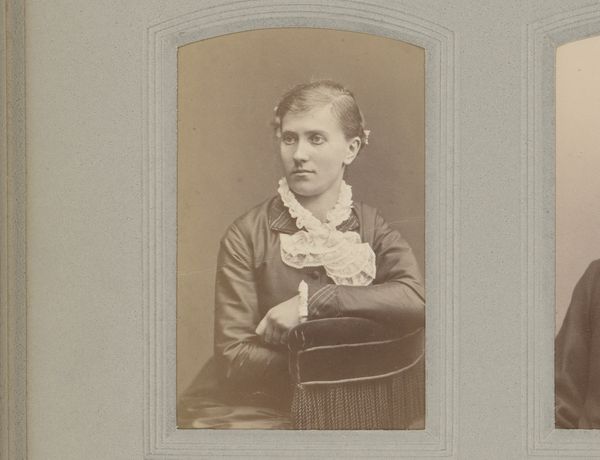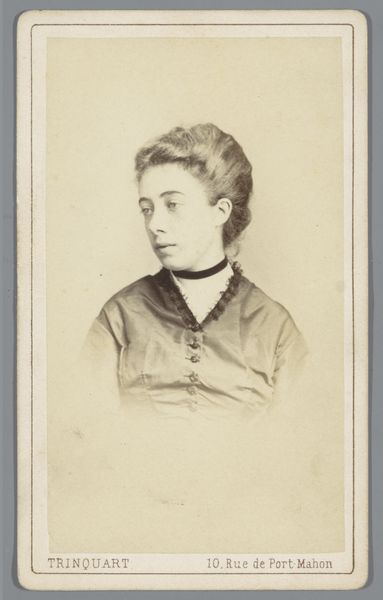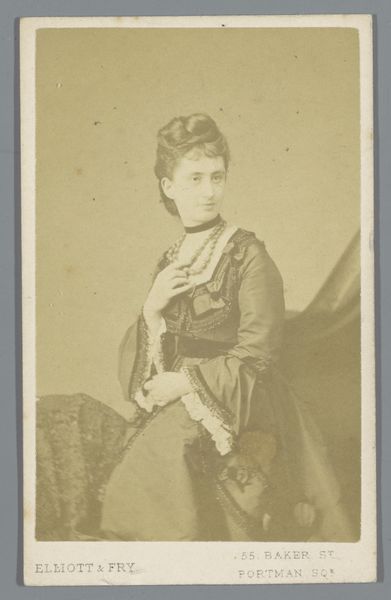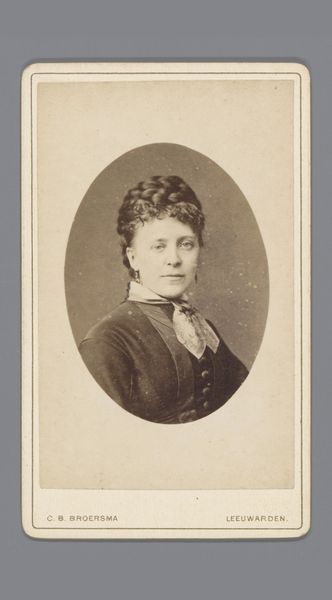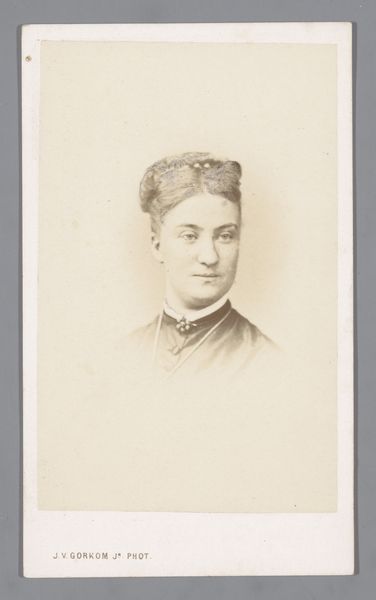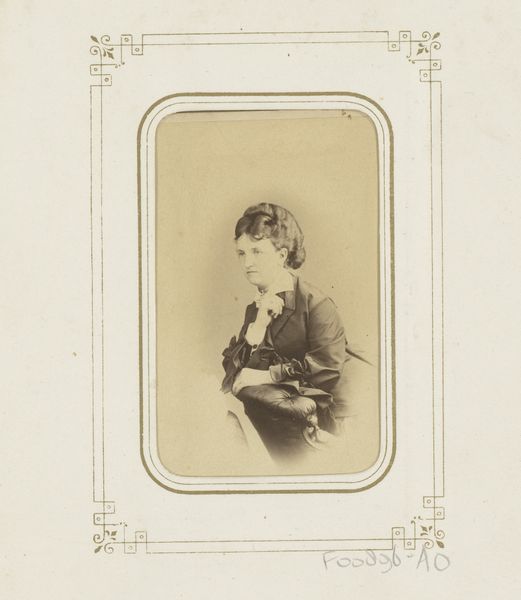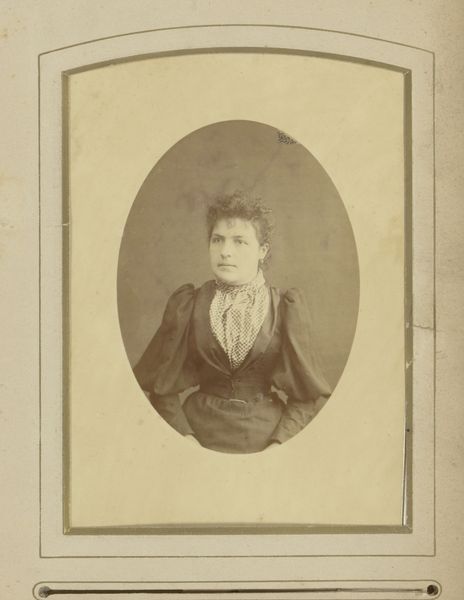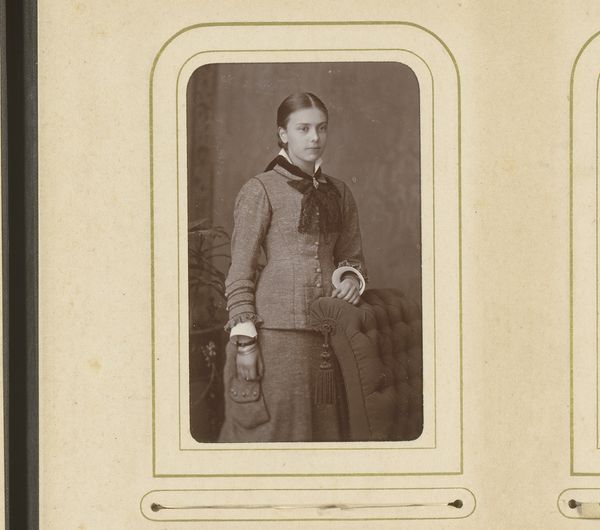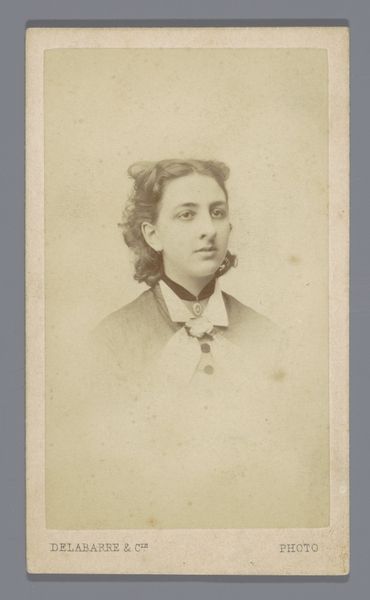
photography
#
portrait
#
still-life-photography
#
photography
#
historical fashion
#
genre-painting
Dimensions: height 105 mm, width 62 mm
Copyright: Rijks Museum: Open Domain
Carl Wigand made this albumen print in Berlin sometime in the 1860s. As a photographic process, albumen printing required coating paper with egg white and silver nitrate, creating a surface that captured fine details with a soft, sepia tone. The process wasn't particularly difficult, but it was labor-intensive. Studio photographers relied on assistants to prepare the paper. This division of labor was characteristic of the era's industrializing world, and it also finds its echo in the image itself. Consider the sitter's knitted shawl, probably made at home using industrially spun yarn. The photograph and the garment both reflect the changing landscape of production and consumption. By focusing on the materials and processes of making, we can understand not only the image, but also the wider social and economic context in which it was created. Photography, like knitting, democratized image-making and design.
Comments
No comments
Be the first to comment and join the conversation on the ultimate creative platform.
